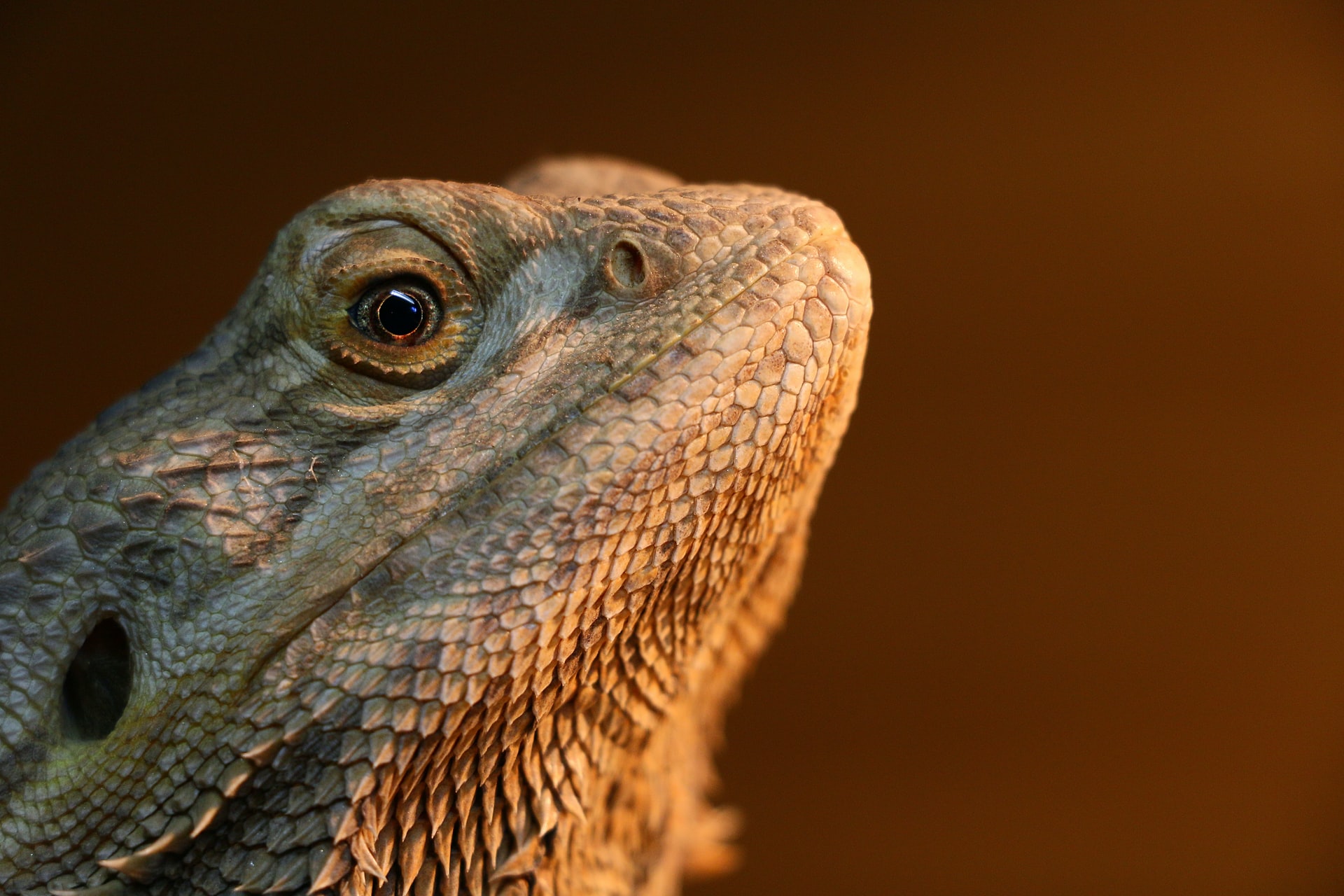Sleep is a phenomenon that ties us irrefutably to our relatives in the rest of the animal kingdom. The requirement to sleep is not only present in the most complex of organisms, such as Homo sapiens, but also in more primitive species, such as the jellyfish Cassiopoiea and the nematode C. Elegans. Even in light of sleep’s ubiquity we understand very little about the emergence of sleep in evolution and neither do we know how the brain generates this unique state. Yet the universality of sleep-like states in the animal kingdom opens up unlikely possibilities. In a study published in the February issue of Nature, scientists have turned to the Australian bearded dragon, a species similar to our early reptilian ancestors, to understand sleep. And they found an extraordinary connection to a mysterious part deep in the base of the human brain.
“Scientists have turned to the bearded dragon […] to understand sleep. And they found an extraordinary connection to a mysterious part deep in the base of the human brain.”
Do lizards sleep like humans?
It was well known that mammals and birds have two main sleep stages. During rapid eye movement (REM) sleep, eyes flutter, muscle tone is lost, and brain activity is more uniform than during wakefulness. During non-rapid eye movement (NREM) sleep, brain activity alternates between periods of silence (OFF periods) and high activity (ON periods). This dynamic is also known as ‘slow-wave activity’.
Slow-wave activity can be recorded in the form of an electroencephalogram (EEG), with electrodes placed on the surface of the brain. The EEG readout consists of the summed network activity of thousands of neurons underlying each electrode. More local network activity can be obtained by implanting electrodes inside the brain to detect ON and OFF activity periods of individual neurons.
In 2016, neuroscientist Gilles Laurent’s group at the Max Planck Institute for Brain Research showed that the Australian bearded dragon, Pogona vitticeps, shares similar patterns of sleep with mammals and birds. Pogona can sleep continuously for 6 to 10 hours while alternating between REM and NREM-like states. Interestingly however, the period of this NREM-REM oscillation is about 80 seconds in Pogona, while a full NREM-REM cycle in humans takes about 90 minutes.
Sleep ripples in brain slices
A particularly interesting aspect of Pogona’s sleep is so called ‘ripple’ activity. We know from mammals that the slow waves seen during NREM sleep typically come with nested ‘ripples’ of activity, produced by short activity bursts. In the mammalian brain, ripples are generated by the hippocampus – a structure known to be involved in learning and memory. Thus, ripples have been associated with memory consolidation, as they may cause replay of neural activity patterns that had occurred during prior learning.
Ripples are relatively sparse in mammalian sleep. In the Pogona brain, however, NREM sleep is dominated by ripples. Of course NREM sleep in Pogona and in humans is likely not the exact same process, yet it opens an intriguing possibility: with ripple activity being so integral to Pogona sleep, its generator could give clues to a major sleep control centre in the lizard, which may have been repurposed in the modern mammalian brain.
It is very difficult to track the origin of ripples during sleep in an intact Pogona brain, so Laurent and his team studied these activity patterns by placing electrodes in different regions of dissected brain slices. Brain slices also displayed spontaneous slow waves and ripples, which is thought to be ‘sleep-like’ activity. By recording from several sites in the reptilian brain slices, they soon found the origin of the ripples.
Tracking down the sleep generator
A small region in the dorsal ventricular ridge (DVR) of the Pogona brain seemed to be generating the ripples, which propagate throughout the rest of the neighbouring regions. The DVR forms a big proportion of the reptile’s brain and is the evolutionary origin of the modern mammalian neocortex, which is the upper layers of our brain that are thought to give rise to more complex functions. However, no one knew the human equivalent of the discovered DVR region – was it an ‘ancient’ hippocampus?
Laurent’s postdoc, Maria Tosches, had been trying to identify what cell types were present in the DVR by collecting individual cells and observing what genes they expressed. By comparing them to the mammalian mouse brain, she found that the cells closely resembled an unexpected region: the claustrum.

A cross-section diagram of the human brain with the elusive claustrum in blue, and the folded neocortex at the surface in gray (source: Wikipedia).
An ancient sleep centre in the brain?
The claustrum, Latin for ‘to shut’ or ‘to close’ – its name aptly matching its enigmatic nature – is a thin sheet of neurons that lies in the centre of the brain and is possibly one of the most widely connected structures. Not only does it have bi-directional connections with the subcortical, primitive ‘reptilian’ parts of our brain, but it also has bi-directional connections to every point of the higher up cortical regions that make us ‘human’. It is highly conserved across mammals, and recently there have been discoveries of an equivalent region in birds, and now reptiles too.
Neuroscientist, Christoph Koch, and co-discoverer of the structure of DNA, Francis Crick, had laid hands on this jewel of the brain more than a decade ago, but only in the recent years are experimental techniques allowing to shed light on its functions. Now, Laurent’s team provides the first evidence for the role of the claustrum in sleep regulation.
In addition, after having identified the claustrum-like area in Pogona brain slice recordings, Laurent’s team wanted to confirm its role in sleep regulation within a live animal. By ablating the claustrum area in the brain of healthy Pogona, the team could record which activity patterns during sleep had been altered. Interestingly, now the lizards showed a normal rhythm of alternating REM and NREM-like sleep, yet ripples were entirely absent during NREM sleep.
“[After] ablating the claustrum area […] lizards showed a normal REM and NREM-like sleep, yet ripples were entirely absent.”
Now what does this tell us exactly? Laurent’s team was cautiously optimistic in interpreting their results. After all, the dissected brain slices used to track down the generator of the ripples may not be an ideal model of sleep patterns, since sleep is a whole brain, whole organism phenomenon. The outcomes from the ablations in the intact brain could be affected by damage to other neurons and neuronal connections outside the claustrum-area.
Nevertheless, the cell classification of the DVR in the reptilian brain strongly indicates that a version of the mammalian claustrum exists in reptiles. In fact, the team also found a claustrum in a distant reptilian relative to Pogona, the Trachemys scripta turtle.
Although the study has its limitations, it may focus the gaze of sleep researchers on an inconspicuous but possibly ancient brain area. “This brain region predates the evolution of reptiles. Indeed, the new work suggests the claustrum and its role in sleep date back 320 million years to the ancestor of birds, other reptiles, and mammals,” Laurent says.
The seat of sleep and consciousness?
Due to its extensive hub-like connectivity, the claustrum has often been hypothesised to be ‘the seat of consciousness’. Its early roots could thereby suggest an emergence of ‘consciousness’ farther back in our evolutionary tree than previously expected. Could it be that the evolution of the early claustrum into further diversified and complex regions such as the amygdala and hippocampus, and ultimately its connections with the neocortex, coincided with the evolution of complex sleep? And did that coincide with the evolution of consciousness?
“Could it be that the evolution of the early claustrum […] coincided with the evolution of complex sleep? And did that coincide with the evolution of consciousness?”
The answers to these questions will greatly deepen our understanding of sleep in particular, as well as the human brain and even biological life more generally. We may certainly learn that we are far closer to our ancestors than we suspect. And considering the findings by Laurent’s team, we might end up finding some of the answers in the most unlikely of creatures.
Sources & further reading:
- https://www.nature.com/articles/s41586-020-1993-6#Sec6
- https://www.sciencemag.org/news/2020/02/australian-bearded-dragon-may-hold-secrets-human-sleep?fbclid=IwAR0v3PCn_jdqB4LkQYT-qwpvilVLA5mJguex2l2p2K-6J3rDiWbWiXcWxs8
- https://www.ncbi.nlm.nih.gov/pmc/articles/PMC1569501/
- https://onlinelibrary.wiley.com/doi/full/10.1002/hipo.22488
- https://www.geekwire.com/2017/consciousness-come-brain-scientist-closes-claustrum/
- https://en.wikipedia.org/wiki/Sleep_in_non-human_animals
- https://link.springer.com/referenceworkentry/10.1007%2F978-3-540-29678-2_3165
- https://en.wikipedia.org/wiki/Evolution_of_mammals
Title image of a bearded dragon by Pierre Bamin on Unsplash





